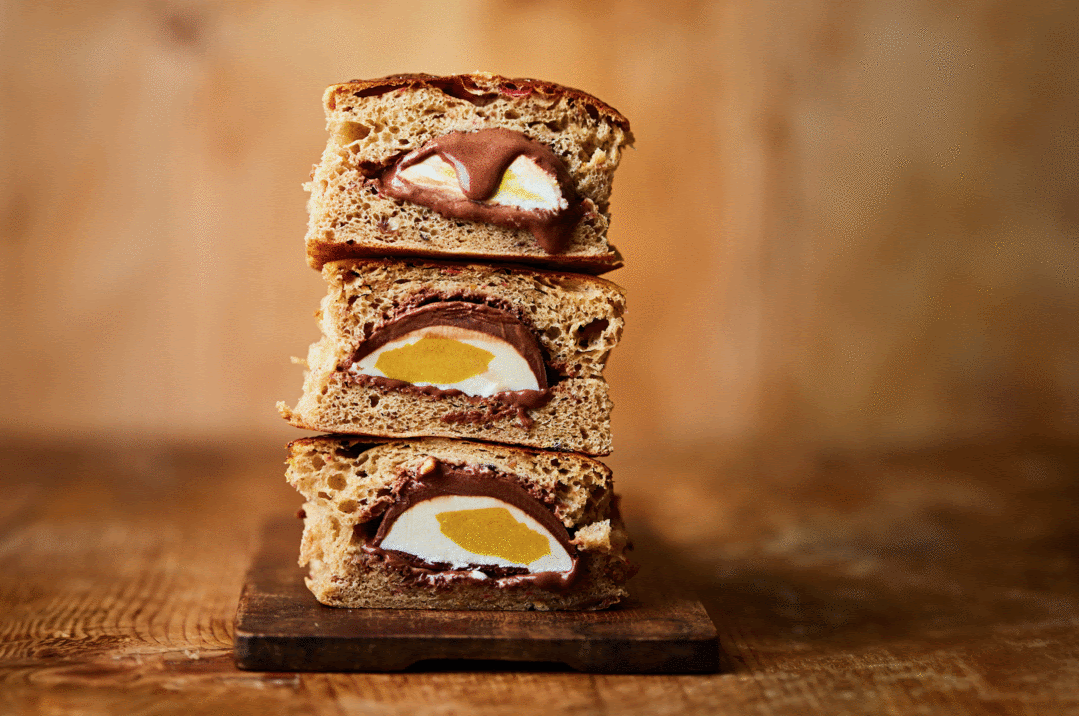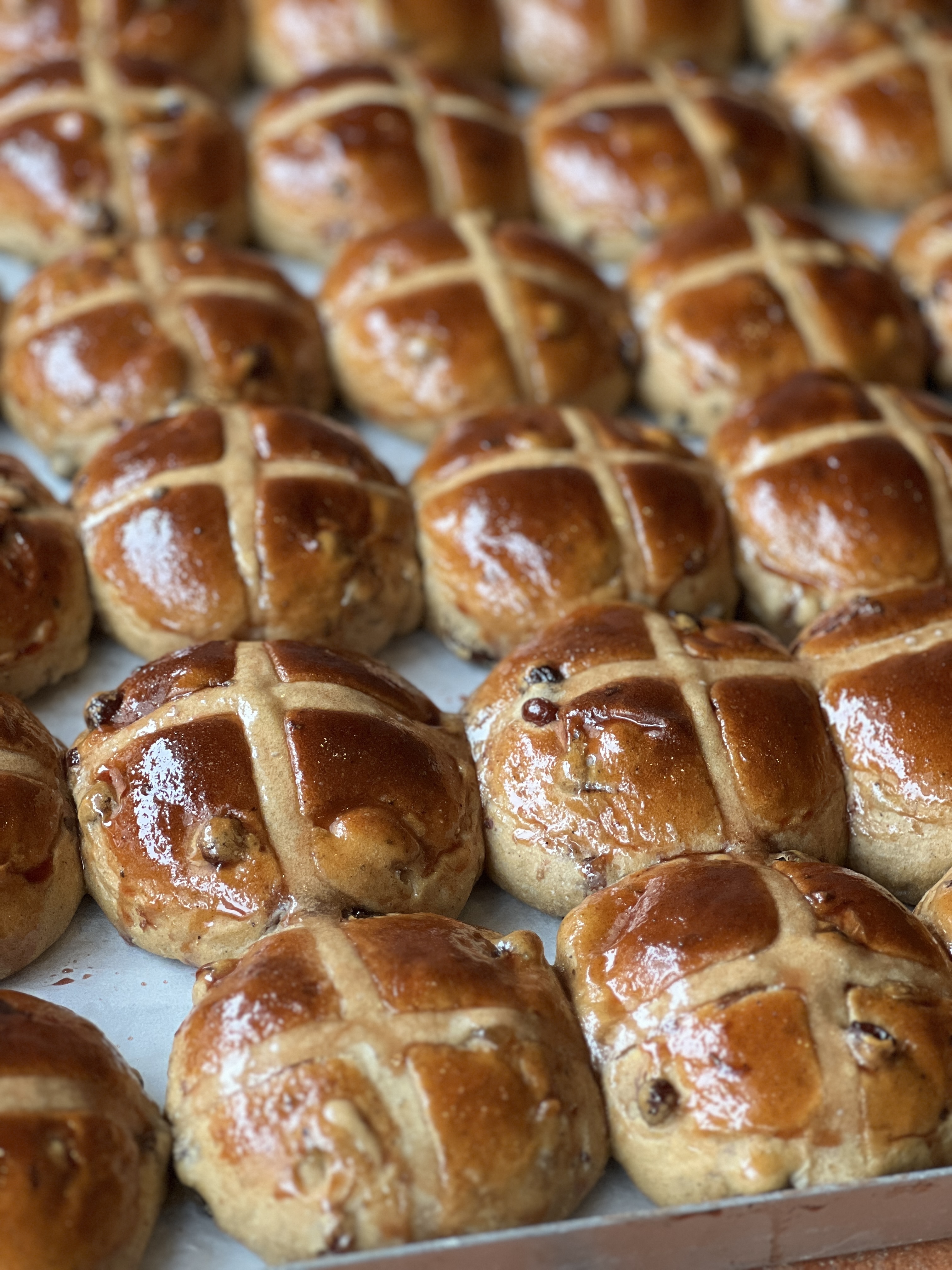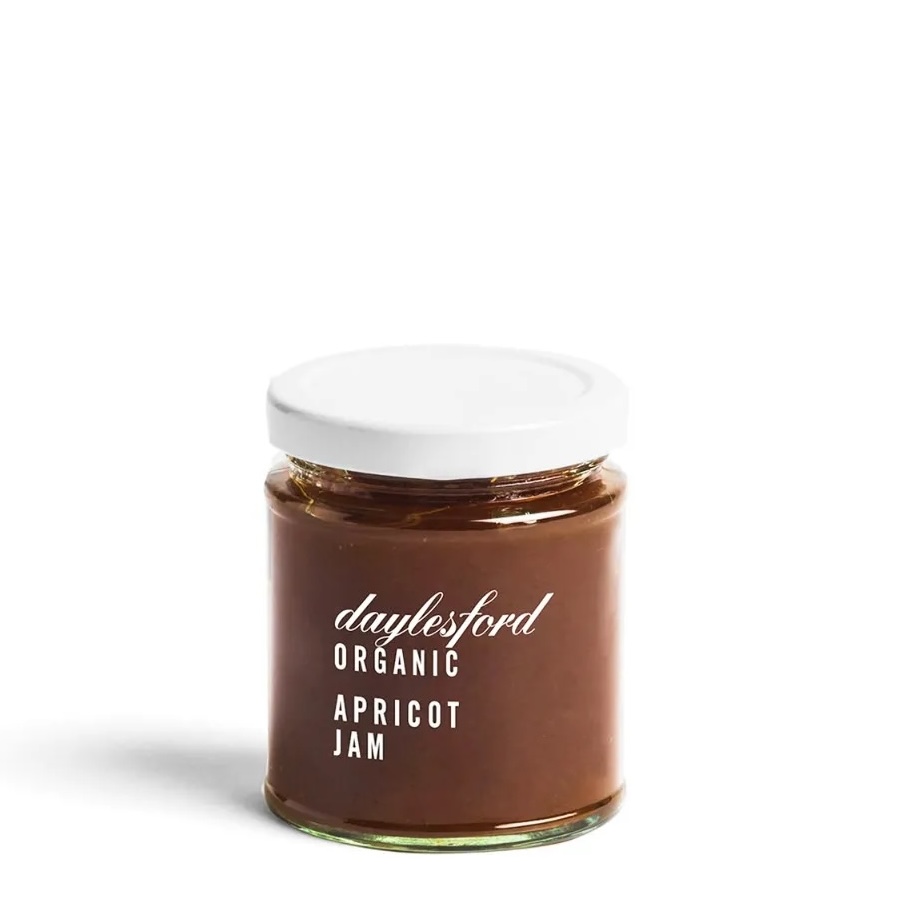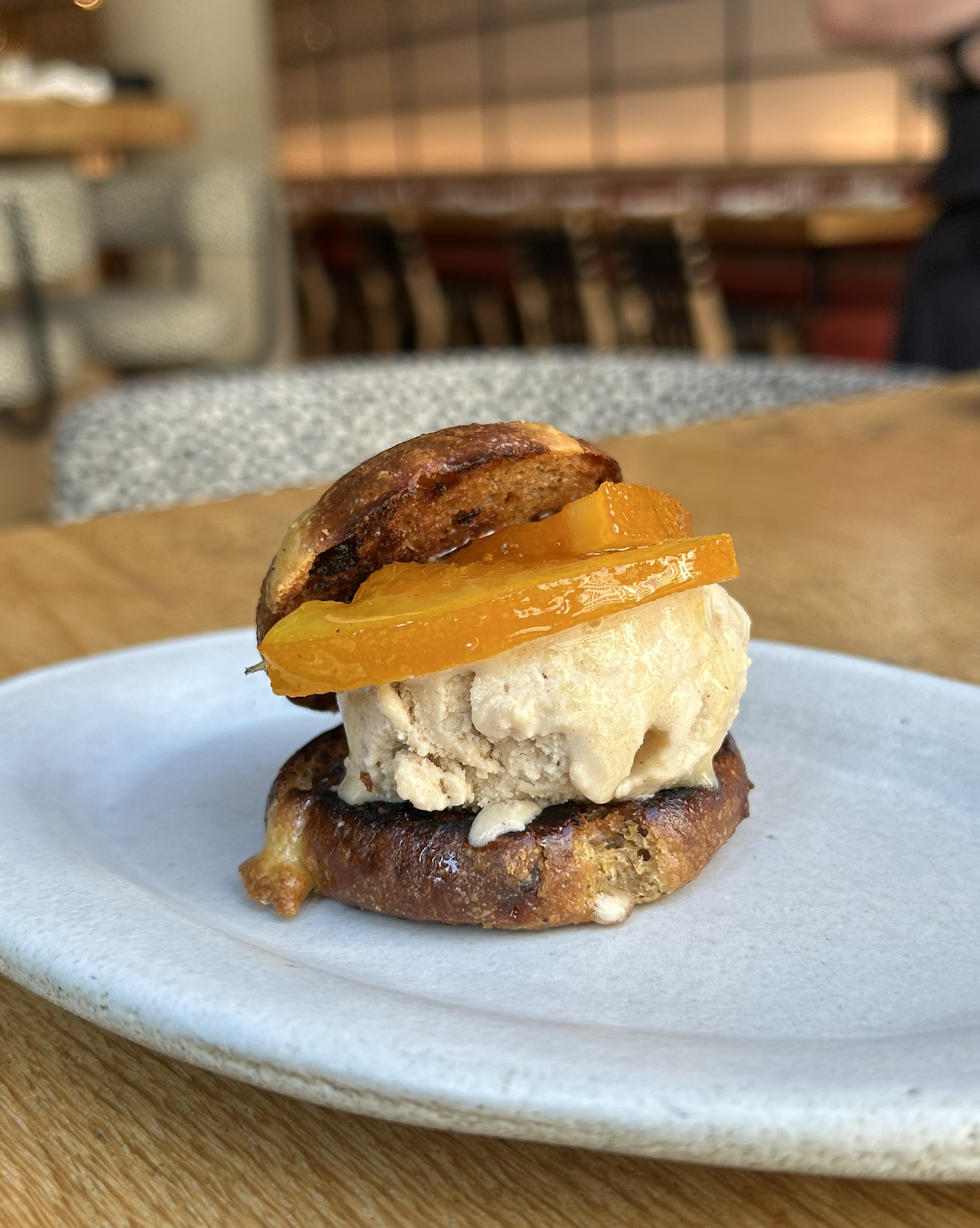Never leave a bun behind: What to do with leftover hot cross buns
Where did hot cross buns originate from — and what can do with any leftover ones?


Traditionally eaten on Good Friday to commemorate the Crucifixion, hot cross buns, the spiced-sweet bread that’s dotted with currants and devilishly good with lashings of butter, are now a mainstay on the British culinary calendar.
The first Good Friday batch is widely attributed to Thomas Rocliffe, a 14th-century monk who baked the goods, known as Alban Buns back then, to distribute among the poor. However, crossed buns are known to have been eaten by the Saxons long before, in honour of Eostre, the goddess of the dawn and fertility, in a celebration that took place in April (and where the word ‘Easter’ is thought to originate). Christian tradition grabbed hold of the Pagan festival and turned it into a celebration of Christ. The cross became a representation of the Crucifixion, and a symbol of the intersection between Earth and Heaven.
At some point, it came to be believed that hot cross buns baked on Good Friday would not decay, and were kept as a symbol of good luck. They were hung from kitchen ceilings like bun-ting (pun very much intended), and left there until a new batch was baked the following year. You may laugh at such superstition, but in April 2000, Bill Foster, a baker from Devon, spent £155 on a hot cross bun that had been stashed in the rafters of a house in 1829, and where it sat for 170 years.
While we don’t recommend eating buns quite so far beyond their best-by date, we hate to think of any going to waste, so we asked some exceptional bakers to share their favourite ways of repurposing leftover hot cross buns — and we included some of our own tips and tricks, too.
Who? Anna Higham, baker and owner of Quince Bakery
What? A tantalising trifle

Once a trainee architect, the celebrated pastry chef and River Cafe alumni now prefers croissants to construction. On the menu today is an Easter-twist on the classic trifle.
‘I soak raisins in sweetened black tea and then add some gelatin to make a jelly. I set that in the bottom of a trifle bowl, then layer with toasted hot cross buns. Pour over some custard (you can add a tipple of choice here, too) and allow the buns to soak it up.
Top it with whipped cream, a little mixed spice, some sugar and more raisins’.
Exquisite houses, the beauty of Nature, and how to get the most from your life, straight to your inbox.
Who? Ian Pickstock, Head of Deli Products and Development at Popham’s Bakery
What? A trans-seasonal celebration
A post shared by P O P H A M S (@pophamsbakery)
A photo posted by on
Cross your buns and your seasons with a hot cross summer pudding.
First, line a lightly oiled, 1 pint pudding basin with cling film, then line the bottom and sides with slices of stale hot cross buns, packing them tight to ensure no gaps. Again, you can add a dash of something boozy at this stage, ‘maybe some Vin Santo or a Pedro Ximinez sherry to match those lovely dried fruit flavours in the buns.’
Take a glut of seasonal berries, gently cooking them down with a little sugar and a squeeze of lemon juice.
Let the compote cool, then fill up the bun basin and top with more hot cross bun slices. Gather the cling film over the top, and cover with a plate weighed down with some tins, leaving it in the fridge overnight.
When it’s ready to present, turn the pudding out onto a plate and serve with an ‘unctuous Jersey cream.’
Who? Michael Engler, Daylesford Organic’s executive baker
What? Bun and butter pudding

‘While switching out the usual brioche or white bread for slices of hot cross bun is a treat unto itself, adding bitter dark chocolate and apricot jam into the layers before baking takes it to another level’.
The best apricot jam for the task? It would have to be Daylesford’s!
Who? Yotam Ottolenghi
What? Hot cross bun ice cream
If you can’t get to Ottolenghi’s ROVI restaurant for a hot cross bun and confit orange sandwich this week, you do not need to worry about missing out entirely, because we have the ice cream recipe right here.

First, whisk together six egg yolks and 130g of light brown muscovado sugar in a bowl. Put 450ml of whole milk, 250g of double cream, and two hot cross buns (toasted and chopped into 1cm pieces) in a saucepan on a medium heat, warming through for about four minutes until bubbles start to form.
Slowly pour half of the hot milk into the egg yolk mixture, whisking constantly until smooth. Then, pour the contents of the bowl into the saucepan on a medium-low heat for 8-10 minutes, stirring constantly until the mixture is thick enough to coat the back of a spoon. Remove from the heat, set aside to cool, and refrigerate for two hours or overnight.
Once cool, pour the mixture through a fine sieve, pressing the solids down to release as much mixture as possible before discarding them. Whisk in 200g creme fraiche and churn in an ice-cream maker.
Transfer to a container and freeze. Serve in a freshly toasted hot cross bun and celebrate the ‘combination of greedy dreams’.
Who? Amie Elizabeth White, Editor’s PA and Editorial Assistant at Country Life magazine
What? Bun granola
This is the only time of year I make my own granola — and hot cross buns are the reason I do it. I dice them up and combine in a bowl with oats, various nuts and seeds, chopped dried fruits (subject to the fruitiness of the buns), olive oil, a splash of lemon juice and a little honey.
Once everything is mixed and coated, lay it evenly on a greaseproof paper-lined baking tray, being careful not to squash it down too much — it should look rustic.
Bake at 180C for 30 minutes (though I quite like to over bake), stirring halfway through.
It is perfect for breakfast and even better on top of caramelised pears and Madagascan vanilla cream for pudding.
What? A hot cross bun breakfast bap
If you prefer savoury over sweet, try sandwiching a fried egg, bacon and tomatoes in a well-toasted hot cross bun, splashing everything with hot sauce. Alternatively, top each half with marmite and cheddar, and grill until the cheese bubbles.
Amie Elizabeth White is Country Life's Acting Luxury Editor. She studied history at the University of Edinburgh and previously worked in fashion styling. She regularly writes for Country Life's London Life supplement and has written for Luxury London, covering everything from Chanel suits and skincare, to the best pies in the city. She has a big heart, but would sell her soul for a good pair of shoes.
